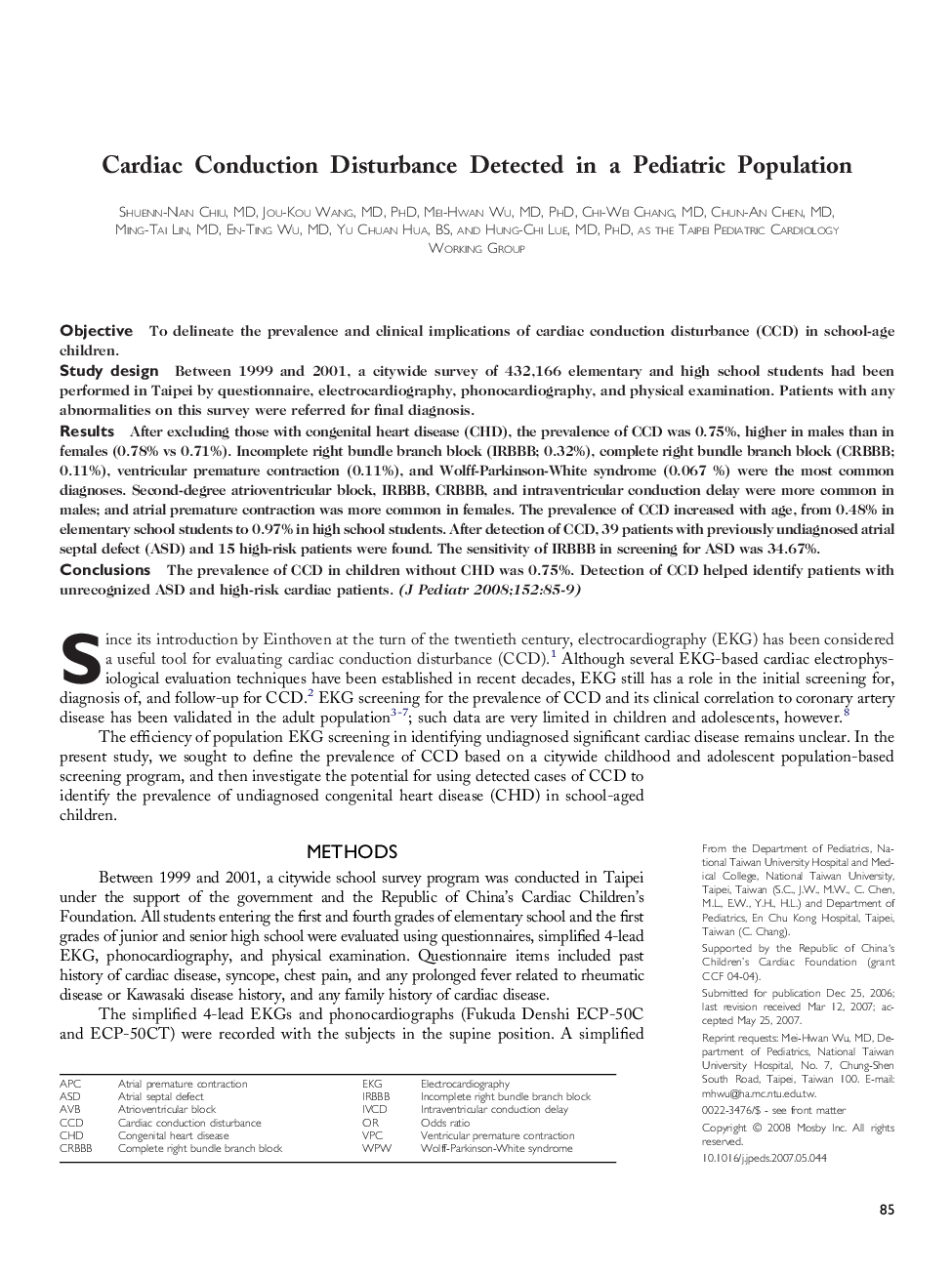| Article ID | Journal | Published Year | Pages | File Type |
|---|---|---|---|---|
| 4167353 | The Journal of Pediatrics | 2008 | 5 Pages |
ObjectiveTo delineate the prevalence and clinical implications of cardiac conduction disturbance (CCD) in school-age children.Study designBetween 1999 and 2001, a citywide survey of 432,166 elementary and high school students had been performed in Taipei by questionnaire, electrocardiography, phonocardiography, and physical examination. Patients with any abnormalities on this survey were referred for final diagnosis.ResultsAfter excluding those with congenital heart disease (CHD), the prevalence of CCD was 0.75%, higher in males than in females (0.78% vs 0.71%). Incomplete right bundle branch block (IRBBB; 0.32%), complete right bundle branch block (CRBBB; 0.11%), ventricular premature contraction (0.11%), and Wolff-Parkinson-White syndrome (0.067 %) were the most common diagnoses. Second-degree atrioventricular block, IRBBB, CRBBB, and intraventricular conduction delay were more common in males; and atrial premature contraction was more common in females. The prevalence of CCD increased with age, from 0.48% in elementary school students to 0.97% in high school students. After detection of CCD, 39 patients with previously undiagnosed atrial septal defect (ASD) and 15 high-risk patients were found. The sensitivity of IRBBB in screening for ASD was 34.67%.ConclusionsThe prevalence of CCD in children without CHD was 0.75%. Detection of CCD helped identify patients with unrecognized ASD and high-risk cardiac patients.
